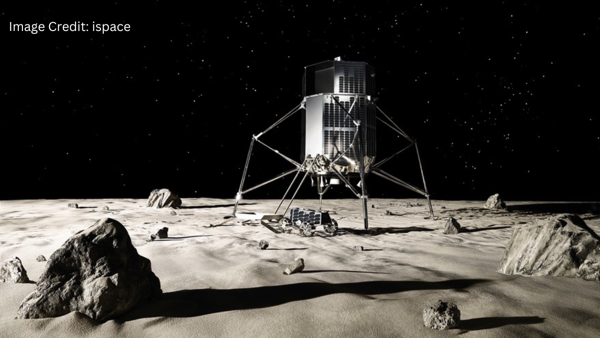
Science & Space
Dream Of Moon: Japan's HAKUTO-R Moon Lander Reaches Lunar Orbit
Our planet has only one satellite, the moon. And the moon has piqued humanity's unwarranted interest. Since the cold war, every capable nation has conducted and still conducting research on the moon in order to find life, water, and natural resources. On July 16, 1969, the United States became the first country to send a person to the moon.
Since then, nations have launched satellites, probes, and other objects. Japan has launched its Hakuto-R Mission1 (Hakuto-R M1), a lunar landing mission. It is primarily a technology demonstration mission, carrying commercial and government payloads such as two lunar rovers, the UAE's Rashid, and Japan's Lunar Excursion Vehicle.
On December 11, 2022, a SpaceX Falcon 9 rocket launched the mission from Cape Canaveral, Florida. Hakuto was put on a lunar trajectory after 40 minutes after its launch and has now entered the lunar orbit. The mission will land in Atlas crater in the Mare Frigoris region on the Moon's near side in the far north in late April.
Objectives of the mission and UAE's contribution:
Hakuto is designed to use less fuel during its journey to save money and make more room for cargo because it is carrying two payloads from the UAE and its parent country Japan.
The name Hakuto was inspired by the white rabbit that is said to live on the moon in Japanese folklore. One of its two payloads is a two-wheeled orange-sized device from Japan's space agency, and the other is a four-wheeled rover designed by UAE's well-known explorer Rashid.
If the rover Rashid successfully lands on the moon, it will be the Arab world's first moon mission and the fastest rover ever to land on the moon.
Hanuto will first look for deposited water before landing in the Atlas Crater. Atlas Crater is located on the moon's near side and is approximately 87 kilometers (54 miles) across and 2 kilometers (1.2 miles) deep.
The mission is very important from the standpoint of ispace, who is actually conducting this mission, and it will demonstrate that Japan is capable of sending payloads into lunar orbit and capable of sending anyone's payload into lunar orbit if any nation wants to in these days of volatility when Russian rockets are unavailable.
It will be a historic event because no privately operated spacecraft has ever landed softly on the moon.
If everything goes as planned, Mission 1 will be followed in quick succession by two other robotic flights to the moon's surface. Missions 2 and 3 are scheduled to launch in 2024 and 2025, respectively. The lander on Mission 3 will deliver payloads to the surface as well as two communications satellites into lunar orbit.

0 Comments